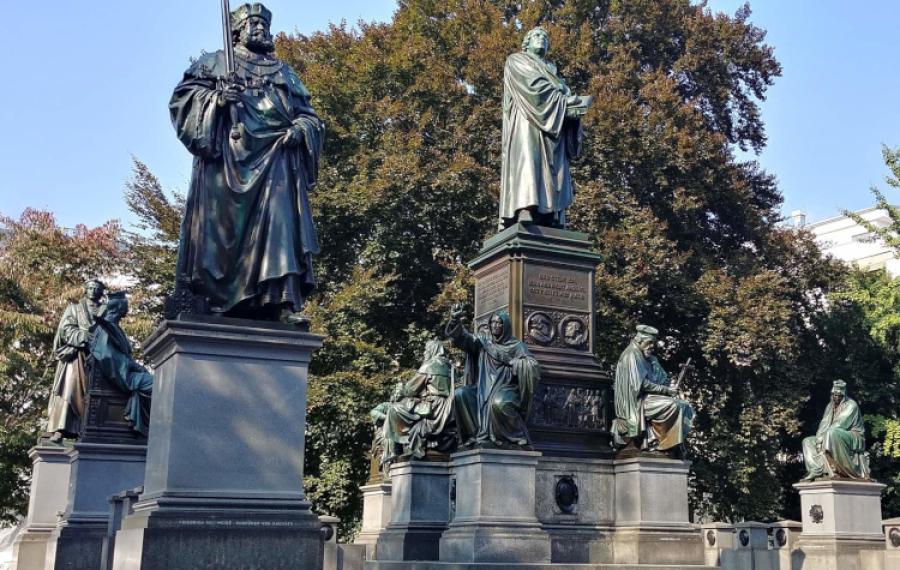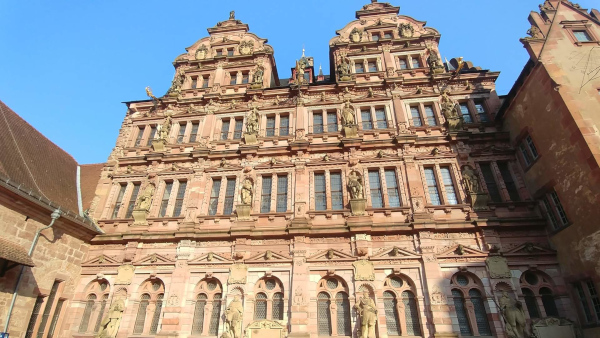The Reformation at 500: The Papal Bull (Part 2)
Image

Read Part 1.
“Since God has given us the papacy,” Pope Leo X stated dramatically, “let us enjoy it.”
There was one man standing in the way of such enjoyment, however. Leo had little regard for the priest in Wittenberg, Dr. Martin Luther, who he referred to as “a drunken German.”
“He will feel different when he is sober,” concluded the pope.
His ability to underestimate Luther could not have been more profound.
The movement that would become the Reformation had advanced greatly in 1518 and 1519. Luther’s encounters with church officials at the Heidelberg Disputation (in May of 1518), at the meeting at Augsburg (with Cardinal Cajetan in October of 1518) and at the Leipzig Debate (where he contended with Johann Eck in July of 1519) had forced him to evaluate the true source of authority. Ultimately, he would conclude that it had to be Scripture alone—Sola Scriptura, a term that would later be used to characterize the formal principle of the Reformation. His clash with the Holy Mother Church was quickly coming to a head.
But, in the providence of God, a web of complications kept the church, or even the Holy Roman Empire, from dealing as quickly or as forcefully with Luther as some thought necessary.
For one thing, the empire was without an emperor from the death of Maximilian I on Jan. 12, 1519, until the election of his grandson, Charles V, who began to reign on June 28, 1519.
And Charles had plenty to keep him busy, as well. He ruled over several kingdoms, including—believe it or not—the earliest American colonies. It was said that “the sun never sets” on the empire overseen by Charles.
Charles was also the grandson of King Ferdinand and Queen Isabella of Spain; and the nephew, by marriage, of King Henry VIII of England, as Henry’s first wife, Catherine of Aragon, was his aunt. Such intricate connections made for a delicate balance of power in the medieval world.
But with Charles finally in place on the throne of the empire, Pope Leo X would spend the final months of his life attempting to hold Luther accountable for his alleged heresies against the Mother Church. After all, in Leipzig, Luther agreed that, upon further study, his teachings were in line with those of John Hus.
The pope took a major step toward his goal when he promulgated his papal bull, titled Exsurge Domine and based on Ps. 74:22, on June 15, 1520. The bull began as follows:
Arise, O Lord, and judge your own cause. Remember your reproaches to those who are filled with foolishness all through the day. Listen to our prayers, for foxes have arisen seeking to destroy the vineyard whose winepress you alone have trod. When you were about to ascend to your Father, you committed the care, rule, and administration of the vineyard, an image of the triumphant church, to Peter, as the head and your vicar and his successors. The wild boar from the forest seeks to destroy it and every wild beast feeds upon it.
Rise, Peter, and fulfill this pastoral office divinely entrusted to you as mentioned above. Give heed to the cause of the holy Roman Church, mother of all churches and teacher of the faith, whom you by the order of God, have consecrated by your blood. Against the Roman Church, you warned, lying teachers are rising, introducing ruinous sects, and drawing upon themselves speedy doom. Their tongues are fire, a restless evil, full of deadly poison. They have bitter zeal, contention in their hearts, and boast and lie against the truth.
We beseech you also, Paul, to arise. It was you that enlightened and illuminated the Church by your doctrine and by a martyrdom like Peter’s.1
The pope went on to charge Luther with 41 false teachings, and said that the ones he listed amounted to just “some of (Luther’s) errors,” which spread “pernicious poison.”2 He seemed particularly exercised regarding Luther’s proclamation that:
Some articles of John Hus, condemned in the Council of Constance, are most Christian, wholly true and evangelical; these the universal Church could not condemn.3
This statement in charge number 30 follows an earlier reference to “the infidelity of the Hussites and Wyclifites.”4
Later, at Worms, Luther would characterize the papal bull as “quite fierce and cruel.”5
Luther finally received the papal bull in October of 1520, and famously burned it in a celebration held at Wittenberg’s Elster Gate on Dec. 10 of the same year. He was then excommunicated in a second papal bull, titled Decet Romanum Pontificem, which Pope Leo X released on Jan. 3, 1521.
The Reformation was taking shape in a way that even Luther himself could never have envisioned just a short time earlier. We are all the beneficiaries of his courage.
Seen above are some of the ruins of the Heidelberg Castle, which Martin Luther visited in May of 1518, at the invitation of Count of Palatinate Wolfgang. Shown here is the Friedrich Building facade.
Notes
1 https://www.papalencyclicals.net/leo10/l10exdom.htm; Internet; accessed 17 June 2020.
2 Ibid.
3 Ibid.
4 Ibid.
5 http://ghdi.ghi-dc.org/sub_document.cfm?document_id=4371; Internet; accessed 17 June 2020.
Paul Scharf 2019 Bio
Paul J. Scharf (M.A., M.Div., Faith Baptist Theological Seminary) is a church ministries representative for The Friends of Israel Gospel Ministry, serving in the midwest. He also assists Whitcomb Ministries and writes for “Answers” Magazine and Regular Baptist Press. For more information on his ministry, visit foi.org/scharf or email [email protected].
- 47 views



Discussion